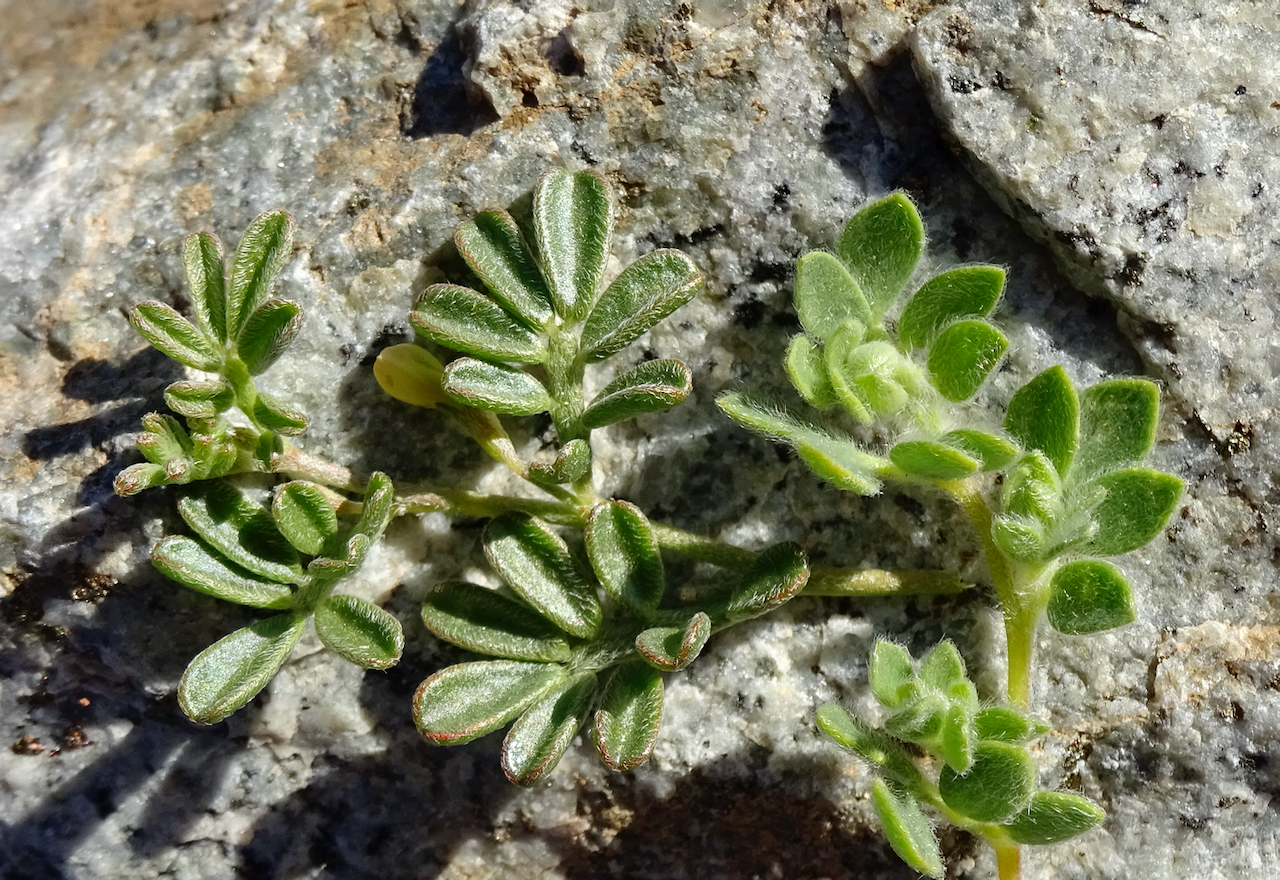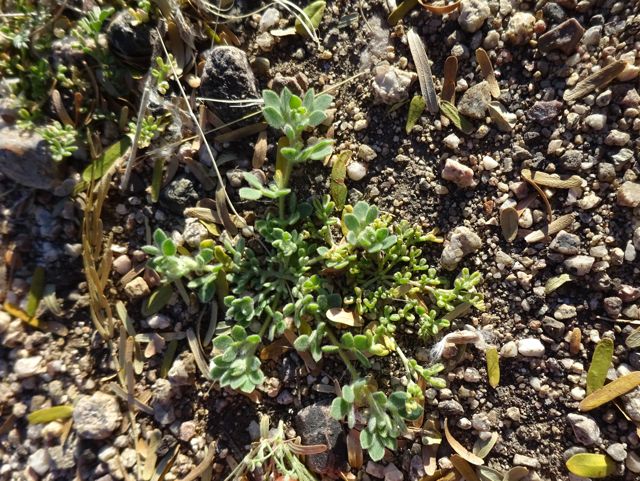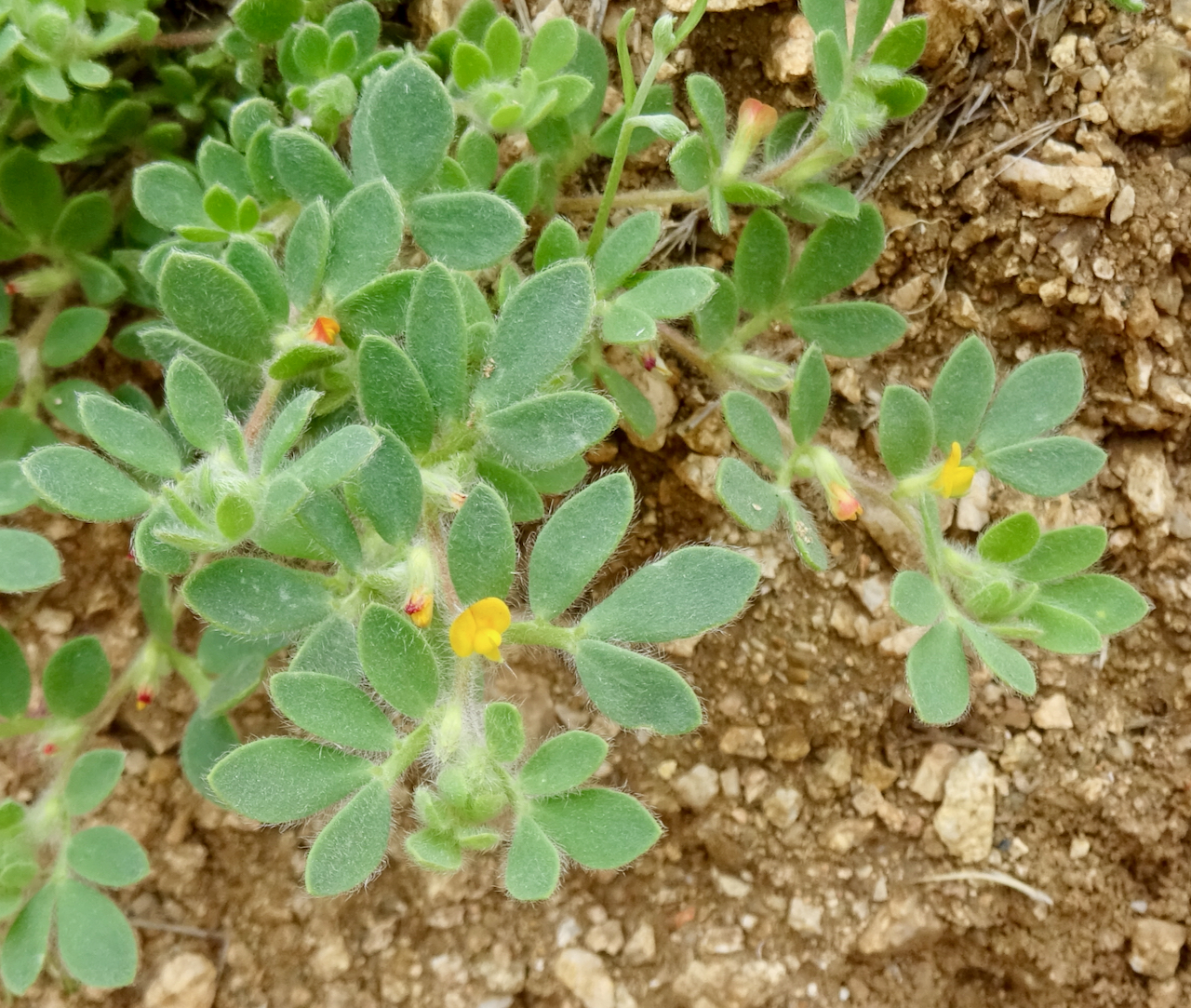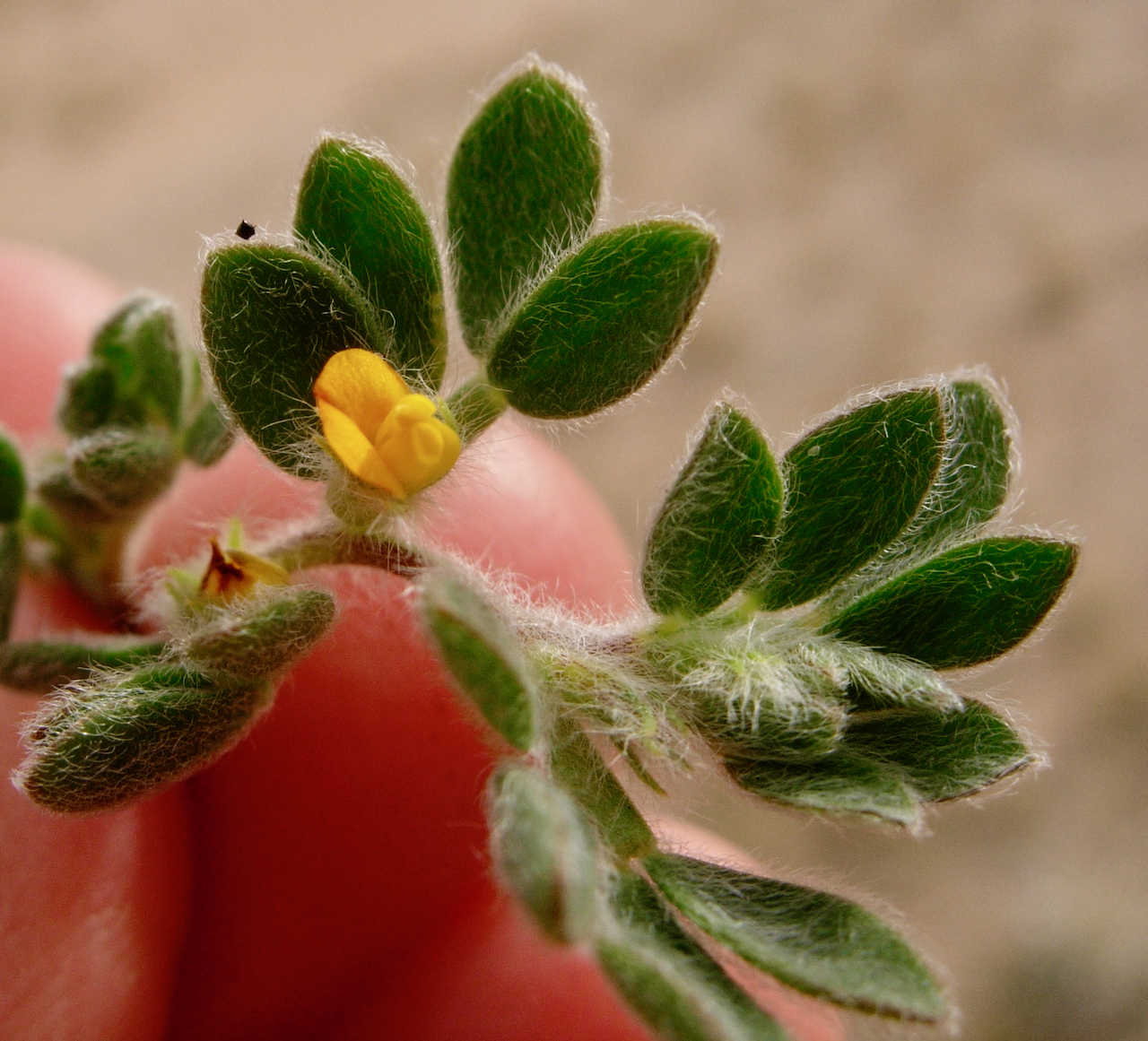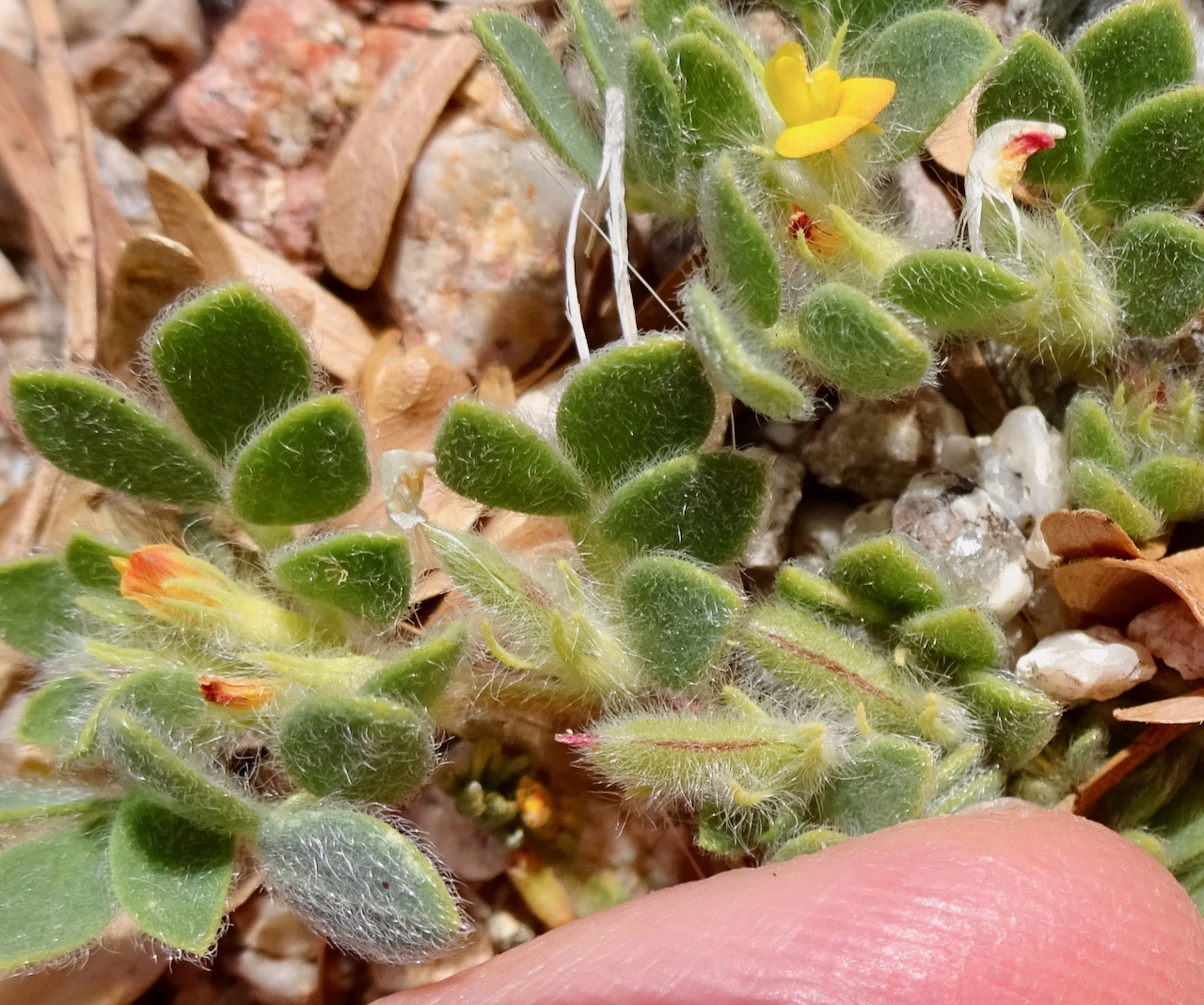Foothill Deervetch
Acmispon brachycarpus
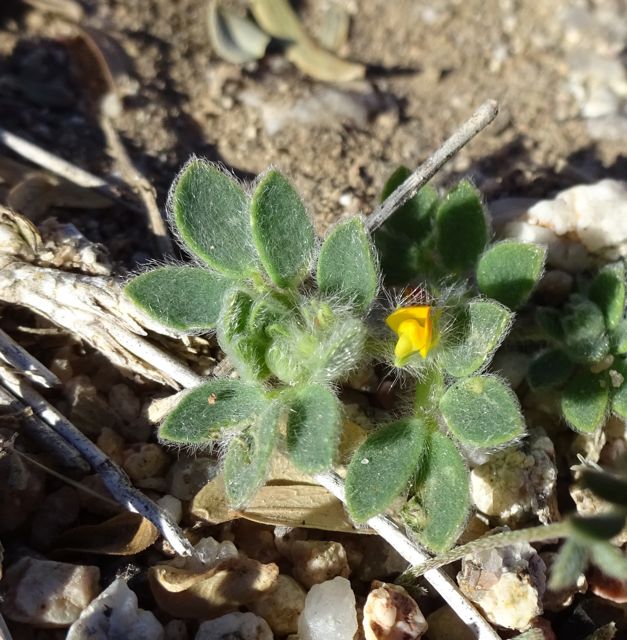
About the Plant
This annual native spring-blooming wildflower has yellow flowers that are often tinged with orange. The plant stays low, only an inch high, but can spread to 6 inches or greater. This is not a showy plant, as the flowers are never abundant. Deervetch needs no care from you other than to leave it alone until it dies back and seeds are released.
Foothill deervetch is very similar to strigose bird's foot trefoil and they can often be found together. Both are native to southwestern US. To distinguish between them, look at the leaves. Foothill deervetch, to right in picture below, has 4 and only 4 leaflets per leaf. The leaflets are thin and not folded. Trefoil, shown to the left, has at least 5 leaflets per leaf and each leaflet appears folded and thick.
Notes: Previous scientific name for this plant was Lotus humistratus
More Information
Weekly Plant on foothill deervetch
Technical botanical description from SEINet
